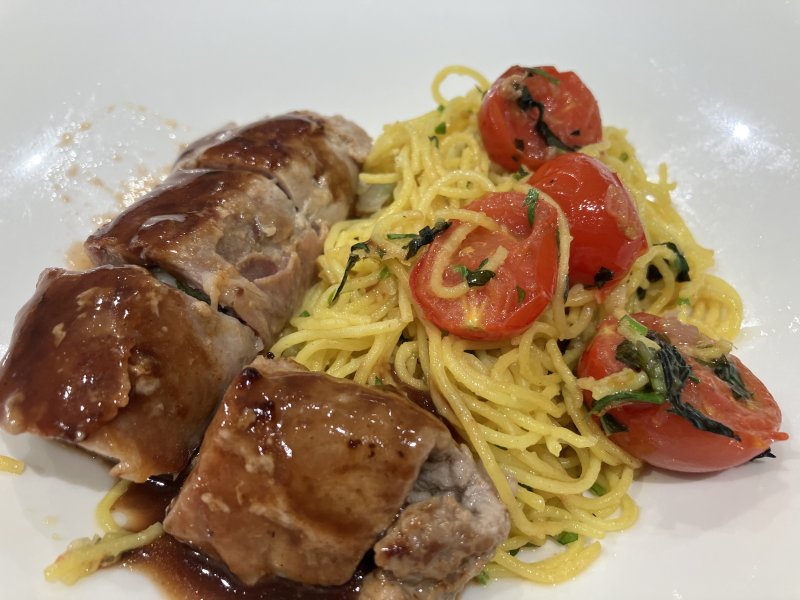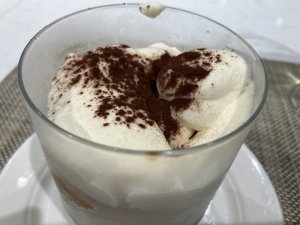Cooking class is standout event during cruise abroad
I’ve just returned from a three-week trip around the United Kingdom, most of it onboard a beautiful cruise ship small enough to dock directly at most of the ports. For dinner on our first night, my neighbor Ann and I attended a cooking class that turned out to be one of the highlights of our journey (next to the castles, cathedrals, distilleries and neolithic standing stones).
In all, there were 12 of us around counters furnished with aprons, dish towels, cutting boards and knives. The main stove was at the front of the room with a slanted mirror overhead to let us watch the proceedings. Each person received a simple chore (and an adult beverage) to start us working. Tasks ranged from chopping vegetables and mincing herbs to slicing mozzarella and shredding duck confit.
Once we appeared more confident, the chef had each of us take on the challenge of pounding out a piece of veal. He advised us to place a towel underneath the cutting board for stability and noise reduction. Instead of starting with cutlets, he gave us small chunks the size of a sea scallop. Some of us could barely heft the heavy meat tenderizer, but we all succeeded in creating a thin round of veal, protected by plastic wrap.
The menu was a simple one, organized for us to cook the side dish first, dessert next and the entrée last. Our first step was risotto. After sautéing the onions, Ann volunteered to manage the cooking. She deglazed the pan with almost a half-bottle of wine (cooking for a crowd) and then mixed in the rice. Next came the repetitive process of adding hot stock to the pan, one ladle at a time, until the grains of rice were perfectly al dente.
While the rice awaited the garnish of sautéed mushrooms and duck confit, we began making the tiramisu. The name of this decadent dessert translates to “pick me up” or “lift me up” or “cheer me up,” basically a nod to the energizing ingredients that include espresso or coffee, cream and sugar. Some urban legends suggest it was the snack of choice at brothels, but whether for the ladies or their customers is lost to history.
Our instructions were to dip ladyfingers in cold brewed coffee mixed with amaretto, and place them in a dessert dish. This was followed by piping in a mixture of mascarpone and whipped cream, followed by another layer of soaked ladyfingers and topped with the cream mixture and cocoa powder. You will sometimes see this made as a full-size dessert in a large rectangle of layered ladyfingers with the same ingredients.
Now we were ready to make the main course, saltimbocca. Another wonderfully named dish, this one translates to “jump in the mouth,” which recognizes the wonderful combination of signature flavors. The previously pounded veal was seasoned with a dusting of salt and pepper, then topped with sage leaves and mozzarella. The veal was rolled up and wrapped in prosciutto before landing in a skillet where it was sautéed, turning the roulade regularly to make sure each side was evenly browned.
While the veal cooked, a large pot of salted water was brought to a boil for the angel hair pasta, which cooked in mere moments and was dressed with a mixture of fresh and sun-dried tomatoes, brightened with lemon zest and juice. The entire dinner was swiftly plated and we tasted the fruits of our labors — a resounding success!
Saltimbocca*
Place veal between two pieces of plastic wrap and pound into a thin rectangle. Sprinkle with salt and pepper, top with two pieces of mozzarella and two sage leaves. Roll up and wrap in two slices of prosciutto. Heat olive oil in a skillet and add 1 T butter. Sauté veal on medium, turning often to brown on all sides. Remove veal to a platter and cover loosely with foil. Add remaining 2 T butter to the skillet; whisk in flour, stirring to a smooth consistency. Add wine and reduce by half. Pour in chicken stock and reduce to a thickened consistency. Arrange the veal on four dinner plates and top with sauce. Serve with angel hair pasta or risotto. Yield: 4 servings. *Adapted from Viking Cooking School.





















































